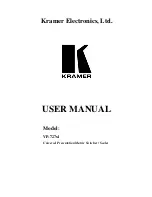
51
Aktionen
TCP messages
When sending TCP messages the Web-IO operates as a TCP client. When initiating
the action it opens a TCP connection to the specified TCP server address on the
specified port, transmits the message or clear text, and then immediately closes the
connection. Any replies from the server are ignored and discarded.
UDP messages
To be able to send UDP messages
UDP-Sockets
must be enabled in
UDP-Sockets
ASCII-Mode
under
Communication paths » Socket-API
.
When sending UDP messages the Web-IO operates as an UDP peer. The message is
transmitted in the form of an UDP datagram to the specified UDP peer address on
the specified port. Any replies from the server are ignored and discarded.
Syslog messages
IP address and host name of the Syslog server, as well as the message texts can be
freely configured.
To be able to send Syslog messages
Syslog
must be enabled under
Communication
paths » Syslog
. All other parameters that can be set there are not relevant for
sending Syslog messages.
FTP messages
The Web-IO can save message texts per FTP to a file.
To do this, FTP support must first be enabled under
Communication paths » FTP
and
access to the FTP server must be configured.
The file name, message and clear texts can be freely formulated.
The options are used to distinguish whether
STOR
is used for each initiated action
to completely overwrite the file or whether
APPEND
is used to append the message
and clear texts continuously to the file.
Switching outputs
When switching outputs the Web-IO differentiates between switching its own out-
puts or switching the outputs on another Web-IO.










































